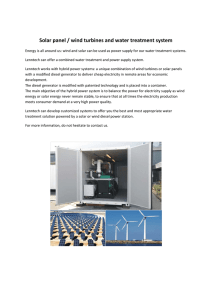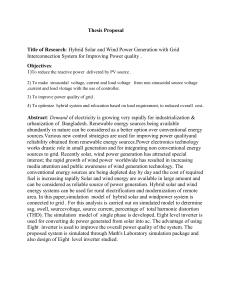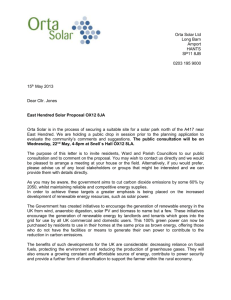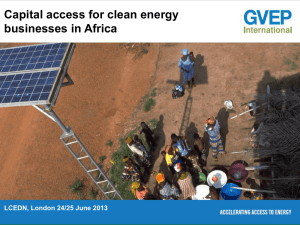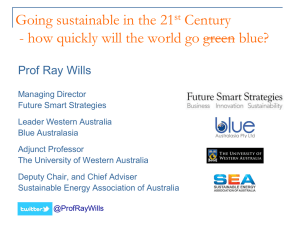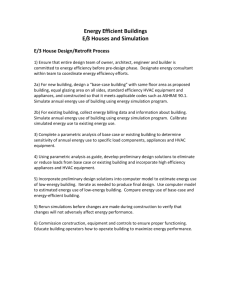Read more..
advertisement
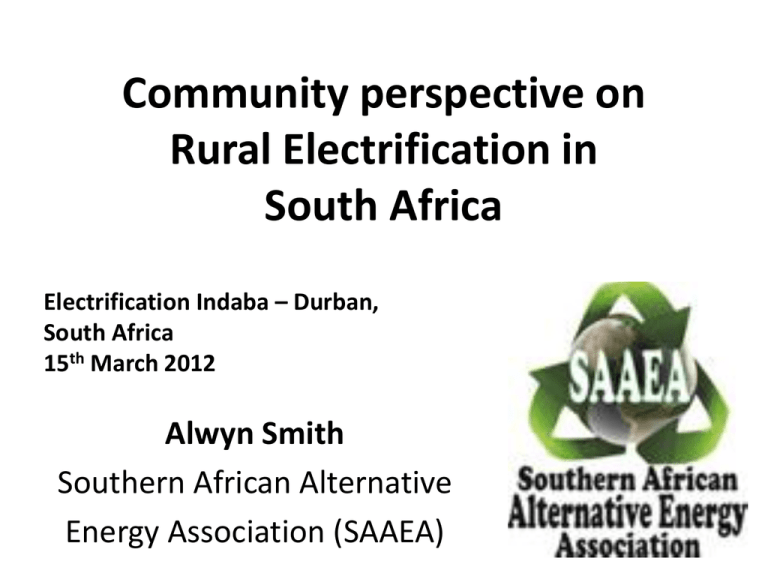
Community perspective on Rural Electrification in South Africa Electrification Indaba – Durban, South Africa 15th March 2012 Alwyn Smith Southern African Alternative Energy Association (SAAEA) Background We are irreversibly dependent on electricity Increased demand and use of appliances, cell phones, pc’s, info, health. . From a novelty to a necessity . New dispensation and population increase . Shortage of logistics and funds for grid connections . Climate change mitigation . Increasing interest in decentralised generation and distribution through mini grids The Alternative Solution Standalone mini-grids that generate electricity from renewable energy resources in rural areas. Solar, Wind, Biogas, Biomass, Hydro, Diesel + Lucingweni Bottled Sunshine......... Tsumkwe (Namibia) Energy Project 200 kilowatt solar power system Solar/Diesel Hybrid system Models Community based model. In this case, the community becomes the owne r and operator of the system and provides maintenance, tariff collection, and management services. Private sector operator. In private sector led systems, a private actor establishes the mini-grid system. Hybrid business model. This approach combines different aspects of the approaches above in order to maximise effectiveness and efficiency. Benefits Rapid deployment Always ready for converting to hybrid, connecting and feeding into the main grid Revenue remains in community control Skills transfer, training and employment opportunities Community ownership ensures good security and maintenance Improved environmental performance in terms of energy efficiency and carbon emissions. Conclusion . Facilitate local research to develop a unique mini grid system based on proven international models. . Show some interest and support alternative energy appliances...... Solar Lanterns/Chargers Small Solar Systems Stoves .Great Solutions start on a small scale ! Thank you....... Alwyn Smith alwyn@saaea.org
